In today’s hyper-connected world, shipping technology and IT goods across borders is a crucial part of global commerce. Whether you are sending servers to a data center, shipping laptops to global offices, or moving specialized technology equipment such as GPU chips to a client, understanding the international shipping process is vital.
From freight forwarding and customs compliance to handling high-value, sensitive, or hazardous goods, the complexity of international shipping cannot be understated.
Learn about the process of international shipping for tech and IT goods, the different shipping services and modes of transport available, the role of compliance, and key considerations such as shipping dangerous goods and high-value items.
What is International Shipping for Technology and IT Goods?
International shipping refers to the movement of goods across national borders. In the case of technology and IT goods, it involves the transportation of hardware such as computers, servers, networking equipment, data storage devices, and specialized tech machinery. Shipping technology goods is more complex than standard freight because it often requires strict compliance with international regulations, particularly when shipping high-value, dangerous, or sensitive items.
As global supply chains continue to evolve, the role of Importers of Record, freight forwarders, and logistics experts in ensuring smooth, compliant shipments is crucial.
Effortless International Shipping Solutions for Tech Businesses
When shipping high-value tech products across borders, navigating international shipping complexities can be a challenge. From servers and AI gear to lithium batteries, each shipment requires careful attention to detail, compliance with regulations, and the right expertise. At TecEx, we provide comprehensive solutions to help your business ship internationally with ease, ensuring efficiency, cost savings, and full regulatory compliance.
Secure Shipping for Servers & High-Tech Gear
Shipping servers, GPUs, and AI equipment internationally is no simple task. Proper documentation, secure packaging, and understanding international regulations are crucial for smooth and timely delivery. With our deep expertise in managing complex shipments, we ensure your valuable tech goods reach their destination safely and efficiently. Whether you’re scaling a GPU cloud service or delivering servers to global data centers, our Server Shipping Experts are here to guide you every step of the way.
Compliant Shipping for Lithium Batteries
Lithium batteries are classified as dangerous goods, requiring specialized handling to meet strict safety standards. From packaging to labeling and ensuring the correct documentation, shipping these batteries requires precision. Our team is well-versed in the latest regulations and can ensure your shipments are fully compliant.
One of the main reasons shipments are rejected by airlines is the incorrect paperwork for batteries contained in the shipment. While most tech-ware contains batteries, we can ensure your shipments avoid rejection and adhere to stringent safety protocols. Find out how by clicking the button below.
Simplifying Dual-Use Goods Shipping
Shipping dual-use goods—those with both civilian and military applications—presents unique challenges. With stringent export control regulations like ITAR, EAR, and ECCN codes, misclassifying products can lead to severe penalties and delays. Our experts ensure your shipments comply with international laws, avoiding costly mistakes.
Maximize Your VAT Savings
Managing VAT across multiple countries can be complicated, but with our VAT recovery services, you can reclaim up to 25% of your hardware value and streamline your customs clearance. We also specialize in VAT compliance in over 117 countries, helping businesses reduce errors and improve cash flow.
Understanding Customs Duties & Taxes in International Shipments
Customs duties and taxes can significantly impact your bottom line. At TecEx, we help you navigate the complexities of import tariffs, ensuring your shipments are compliant and cost-efficient. With our expert tools, you can forecast costs, avoid costly errors, and optimize your global supply chain.
Power of Attorney for Smooth Customs Clearance
A Power of Attorney (POA) is essential for ensuring smooth customs clearance. Without it, your shipments could face significant delays and penalties. TecEx makes securing and managing your POA easy, allowing us to handle customs clearance on your behalf.
Optimized Palletization and International Warehousing Solutions
Proper palletization is critical for protecting your shipments and ensuring they arrive safely at their destination. We help you choose the right pallet size, material, and ensure compliance with ISPM-15 regulations. Additionally, our Forward Stocking Locations (FSL) reduce transit times and improve inventory management. We optimize your warehousing and palletization needs, and ensure your shipments are handled with care.
Comprehensive Cargo Insurance and Liability Coverage for International Tech Shipments
When shipping valuable tech goods, cargo insurance is a must to mitigate risks. Our global door-to-door liability coverage ensures your goods are fully protected from pick-up to delivery, covering all potential risks—including freight, tariffs, and import fees. Get a quote for comprehensive coverage that safeguards your shipments.
Accurate Product Classification and Compliance for International Destinations
Proper product classification is essential for smooth international shipping. Whether it’s HS Codes, HTS Codes, or ECCN codes, misclassification can lead to delays, fines, or even seizures. We provide expert assistance in classifying your products correctly, ensuring compliance with all international regulations.
Specialists in International Shipping Import and Trade Compliance
TecEx specializes in the full spectrum of import and trade compliance services. From the initial stages of logistics planning to final customs clearance and delivery, we ensure that your tech and IT shipments are handled efficiently and comply with all international regulations. Understanding incoterms like DDP (Delivered Duty Paid) can be confusing, but with our all-in-one DDP solution, we handle everything—from compliance to final delivery. Whether you are shipping sensitive equipment to data centers or need assistance navigating complex export laws, we are here to streamline your global shipping process.
FAQs | International Shipping of Tech and IT Goods
What’s the most cost-effective method for shipping large quantities of IT goods?
Ocean freight is generally the most cost-effective method for large shipments of tech equipment. However, air freight is better for high-value or urgent items.
Do I need an Importer of Record for every shipment?
Yes! If you are shipping tech goods into a country and are not the IOR yourself, you will need to designate an IOR to handle customs clearance.
How can I ensure my technology equipment is compliant with local regulations?
Work with an IOR to ensure that all import/export documentation is correct. You may also need legal assistance to navigate complex export control regulations.
How do I ensure my tech equipment is properly packaged for international shipping?
Tech goods should be packaged securely with anti-static materials, cushioning, and protective boxes. High-value items may require custom packaging to avoid damage during transit.
What documents are required for international shipping of tech goods?
Common documents include a commercial invoice, packing list, bill of lading, export license (if applicable), and any necessary certifications for compliance.
Key Players in International Shipping
When shipping tech and IT goods internationally, it’s essential to understand the roles of the Importer of Record (IOR) and the Freight Forwarder, as both are crucial to ensuring smooth, compliant shipments.
International Shipping for the Importer of Record
An IOR is the entity responsible for ensuring that goods are imported in compliance with the regulations of the destination country. They handle the paperwork and duties associated with clearing goods through customs and may also be responsible for paying any tariffs or taxes on the goods.
International Shipping for the Freight Forwarder
A Freight Forwarder is a third-party logistics provider who helps coordinate the movement of goods from one point to another. They work with various transportation carriers (airlines, shipping companies, trucking firms) to arrange the logistics of shipping, but they are not responsible for customs compliance.
Key Difference Between an IOR and a Freight Forwarder
While the IOR handles regulatory compliance and customs, the Freight Forwarder ensures efficient logistics and transport of goods across borders.
Modes of International Shipping for Tech and IT Goods
The shipping process varies based on the mode of transport, each with distinct advantages and challenges. Let’s break down how each mode works for shipping technology and IT equipment.
Ocean Freight
Ocean freight is one of the most cost-effective and common methods for shipping large quantities of tech equipment over long distances. For bulky or heavy shipments such as servers, computers, or industrial tech components, containerized shipping is often the best option.
Advantages:
- Economical for large shipments.
- Ideal for bulky or heavy items.
- Global network of ports, making it accessible to most countries.
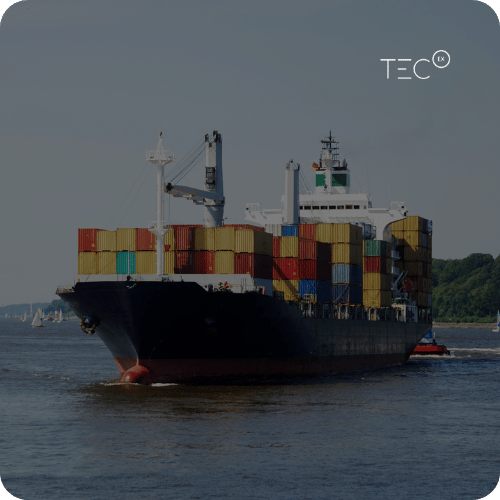
Challenges:
- Slower transit time compared to air freight.
- Risk of damage due to rough sea conditions, though this can be mitigated with proper packaging.
- Risk of port bottlenecks and geopolitical conflict affecting high-traffic routes, as seen with the Ever Given vessel blocking the Suez Canal in 2021 and the conflict in the Middle East impacting Red Sea shipping in 2024.
Key Consideration:
When shipping valuable or delicate items, ensure containers are properly insulated and secured to avoid damage during transit.
Air Freight
Air freight is typically used for high-value or time-sensitive tech shipments. It’s ideal for shipping smaller quantities of IT equipment such as laptops, tablets, or networking hardware that needs to arrive quickly.
Advantages:
- Fastest shipping option, ideal for urgent and time-sensitive shipments.
- High security, reducing the risk of theft or damage.
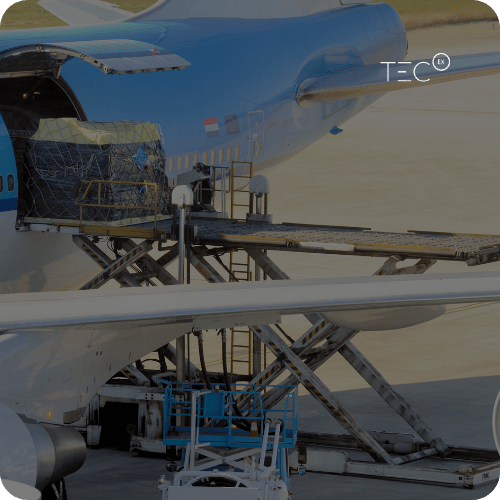
Challenges:
- More expensive than ocean freight, especially for heavier shipments.
- Limited space on the aircraft means heavier shipments may not be feasible.
- Access to remote islands and territories such as New Caledonia and Papua New Guinea may be tricky.
Key Consideration:
Ensure compliance with airline and customs regulations regarding the shipment of tech equipment, as some countries have strict air freight security protocols.
Road Freight
Road freight is primarily used for regional shipping, particularly in large markets such as the US, Europe, and parts of Asia. It’s ideal for short to medium distances, and it is often used for smaller shipments or to transport goods from ports to final destinations.
Advantages:
- Flexibility in routing.
- Often cheaper than air freight and faster than ocean freight for regional shipments.
Challenges:
- Can be affected by road conditions and traffic.
- Subject to customs checks, which may delay shipments at borders.
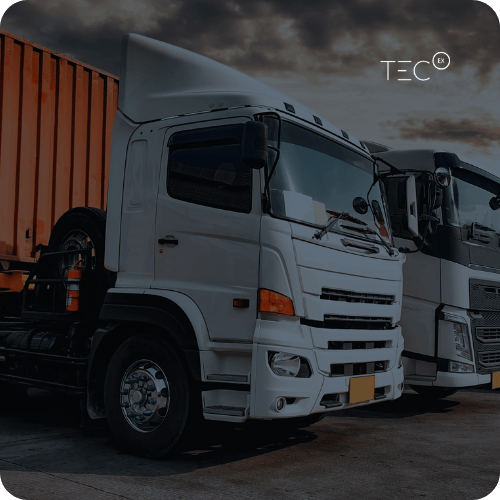
Rail Freight
Rail freight is an ideal choice for land-based shipments across continents, particularly for large quantities of tech equipment that need to be transported efficiently across regions.
Advantages:
- Cost-effective for large shipments over long distances.
- More environmentally friendly compared to road transport.
Challenges:
- Less flexibility in terms of routing compared to road freight.
- Dependent on infrastructure, which can vary by country.
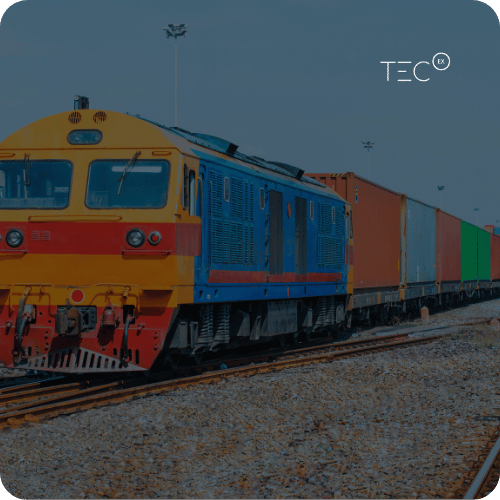
Now you know! Our liability cover doesn’t just cover ocean freight, but all modes of transport – include road, rail, and air.
The Role of Freight Industry Leaders in International Shipping
At TecEx, we work closely with industry leaders in freight and logistics to ensure that your tech shipments are handled with the utmost care. Our established relationships with top freight carriers and warehousing partners enable us to provide efficient, reliable, and cost-effective solutions for your global shipping needs.
By leveraging these partnerships, we can ensure that your shipments are delivered on time, in perfect condition, and in full compliance with international regulations.
Shipping Tech to Global Offices, Data Centers, and Compliance-Heavy Countries
Shipping IT and tech equipment internationally can be especially complex when it involves compliance-heavy regions or specialized uses.

Global Offices
Companies with offices around the world need a reliable system for shipping tech equipment to remote locations like the Cayman Islands and the Canary Islands. This often involves not only cost-effective shipping options but also ensuring that the equipment complies with local regulations in terms of taxes, import duties, and certifications.
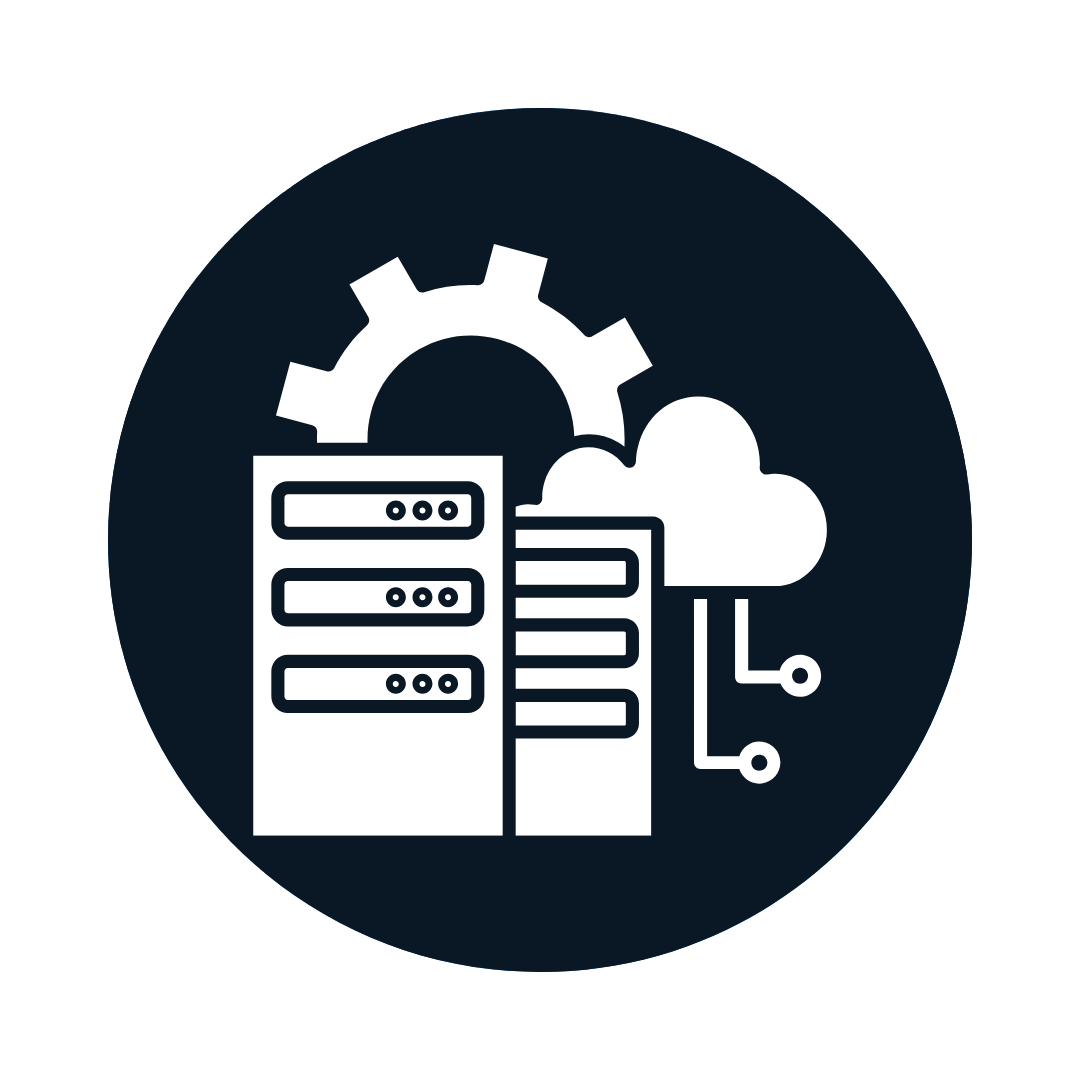
Data Centers
Tech companies frequently need to ship servers, networking equipment, and other infrastructure to data centers. These shipments are often high-value and require high security and compliance with local import/export laws. In some cases, IT equipment must meet specific safety and quality standards to be accepted into foreign data centers.

Compliance-Heavy Countries (e.g., EU, China, India)
Countries with complex import laws and high levels of regulation often have stringent requirements for tech shipments. These include regulations such as the GDPR in the EU, trade wars and sanctions between the US and China, and EPR in India.
It is crucial in these stringent regions to have a trusted import partner who understands the local legal environment and ensures full compliance.
